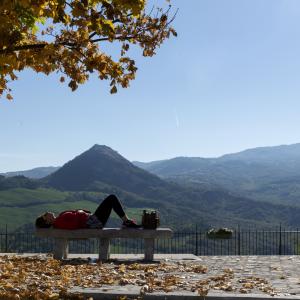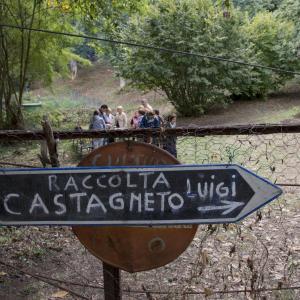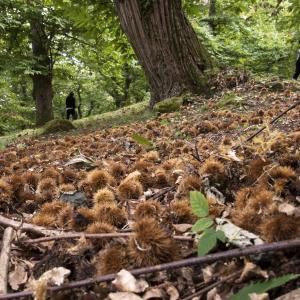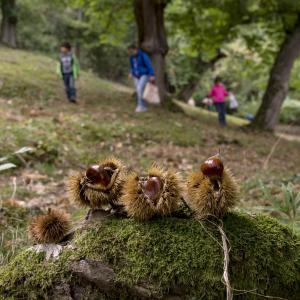Discovering the chestnut woods of Riviera di Rimini.
In the autumn, the woods of Riviera di Rimini offer possibilities for delightful walks for chestnut picking, immersed in nature in all its colours.
This activity for visitors of all ages is available both in the upper Valmarecchia valley near Talamello, Uffogliano, Perticara, San Leo, Montecopiolo, and Casteldelci, and in the upper Valconca in Montefiore Conca and Gemmano.
In the month of October, chestnut festivals are held in both valleys, centring on Talamello and Montefiore Conca, and guided tours and chestnut-picking outings are organized. The locations are easy to find and in some cases agreements with landowners may be made for a highly fruitful day of chestnut picking.
Here are some of these woods:
Montefiore on Mount Faggeto is home to one of the province’s most important woods, both in terms its very old trees and for the particularly rare flora to be found there, all of which makes for an invaluable landscape heritage.
Other chestnut woods forming the substantial Montefiore nucleus are those of Case Suore, Mount Maggiore, and Mount Auro.
Uffogliano in Novafeltria is home to the Valmarecchia’s most well-known chestnut grove, called the “chestnut jungle,” where the ancient castle called “castellaccio” once stood on a rocky spur. The entire ridge is densely wooded, and the castle’s ruins are overgrown with vegetation in places.
Some even larger chestnut woods on Mount Pincio in Talamello, on Mount Ercole, and on Mount Benedetto were once frequented by gunpowder smugglers who found refuge there when pursued by the gendarmes – first the Pope’s, and then those of the Kingdom of Italy.
No less important are the chestnut woods of Casteldelci, characteristic of mountain life and a source of subsistence. While the introduction of chestnut cultivation is in all likelihood to be credited to monks who settled in the valleys during the Middle Ages, it might date back to the Roman era.
Nutritional subsistence was not the only benefit that the local populations drew from the chestnut tree. Expanding cultivation was promoted by other key activities. In the Marecchia valley, these included sulphur mining. The tunnels extending upwards of hundreds of metres in depth were shored up with beams and props made of chestnut, one of the most durable woods found in Europe.
With the arrival of the Industrial Era, the chestnut lost much of its importance. Also stricken by serious diseases, the fruit-bearing trees were abandoned and, in the decades following the Second World War, the gradual improvement in well-being increasingly dissolved the centuries-old bond that had existed between people and chestnut trees. Chestnut cultivation was therefore relegated to an increasingly restricted area, practised by a handful of enthusiasts.
For all information on where to pick chestnuts:
Explore Valmarecchia
For the chestnut woods of the municipality of Talamello:
Piscaglia: 338 4424500
Alessi Luigi: 331 2037817
Ugolini Gianpaolo: 328 0778615
For the municipality of Montefiore Conca:
Proloco di Montefiore: Andrea Spadoni 333 8730347



